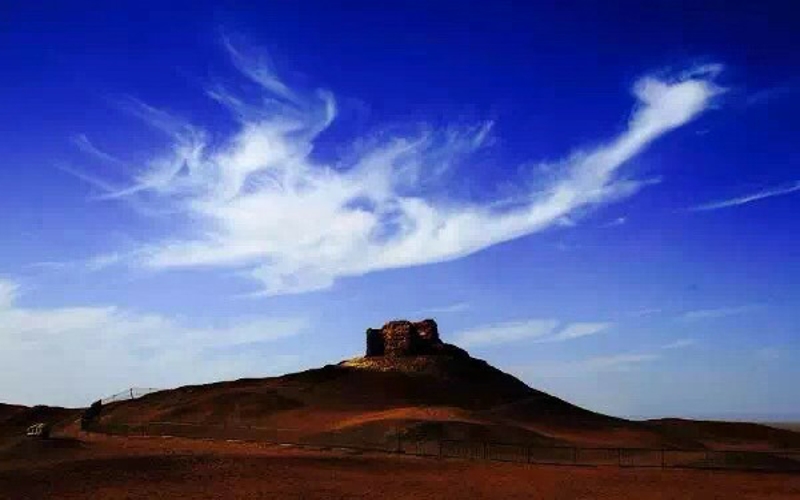Yangguan Pass and The Jade pass were two important passes along the Silk Road closest to the Western Regions and their remains have become the tourist attractions of Dunhuang. Yangguan pass, also known as the Southern Pass, sits 75 kilometers southwest of Dunhuang The ancient Yangguan Pass which was believed to have been on the Gudong (Curios) Beach at the western corner of the South Lake Village of Dunhuang no longer exists. This pass was originally built by Emperor Wu in the Han dynasty as one of the two critical defensive passes protecting Dunhuang from invasion from the west about two thousand years ago.
To a certain extent, in modern times, Yangguan Pass is quite ruined with great sections buried in the shifting sands. However, at its heyday, this system of beacon towers and walls marked the western border of the Chinese Empire, although it seems slightly difficult to imagine this today. There are hardly any walls in sight today, with the only visible sections being the foundations of some of the walls. To the south of the mound is an expanse where one may find millions of pieces of broken tiles over an area of twenty square kilometers, some of the last remaining evidence of civilization here.
The grand museum established in 1979 houses almost 4, 000 historic cultural relics, including documents behind the scriptures in the Mogao, stone tablets, cooking vessels, rare embossed bricks from the Han Dynasty and silk and brocade evidence of the Silk Road. The courtyard in front of the main building is adorned with sculptures of people leading camels along the ancient trail. The entire display is simple yet very informative and interesting. We returned to our hotel with a heart full of happiness for being able to witness a historical monument, geographical beauty and cultural treasures, all in one place.
The other pass is The Jade Pass, located on a hillock 90 kilometers northwest of Dunhuang city, and is an important pass of the north route on the Silk Road. After Zhangqian served as an envoy to the West Region a mass of silk and tea from Central China were exported abroad through this pass, and in return, fruit, specialties and religion culture were brought in. The Jade Pass was also called "Small Square City". The present city was constructed with rammed earth with two gates respectively in its west and north directions built with yellow clay. The wall is 10 meters high and its top is 3 meters wide and bottom 5 meters. Why was the name "Small Square City" replaced by "The Jade Pass"? Legend had said that a rare square piece of jade sent from the west to the Han emperor was set on the gate of "Small Square City" for the sake of ensuring the security of passing trade caravans. So the city was named as "The Jade Pass" since then.
The ruins of The Jade Pass are relatively well-preserved. Owing to severe erosion, however, some parts of the walls have collapsed, forming huge holes. On the northern side, there is a road leading west towards the ancient village of Hechang ( 15km away), which used to be the granary for the pass garrison. Beacon towers stand at several kilometer intervals along the 70 kilometer distance between the two passes. From the castle of The Jade Pass the remains of the Han section of the Great Wall can be clearly seen.







